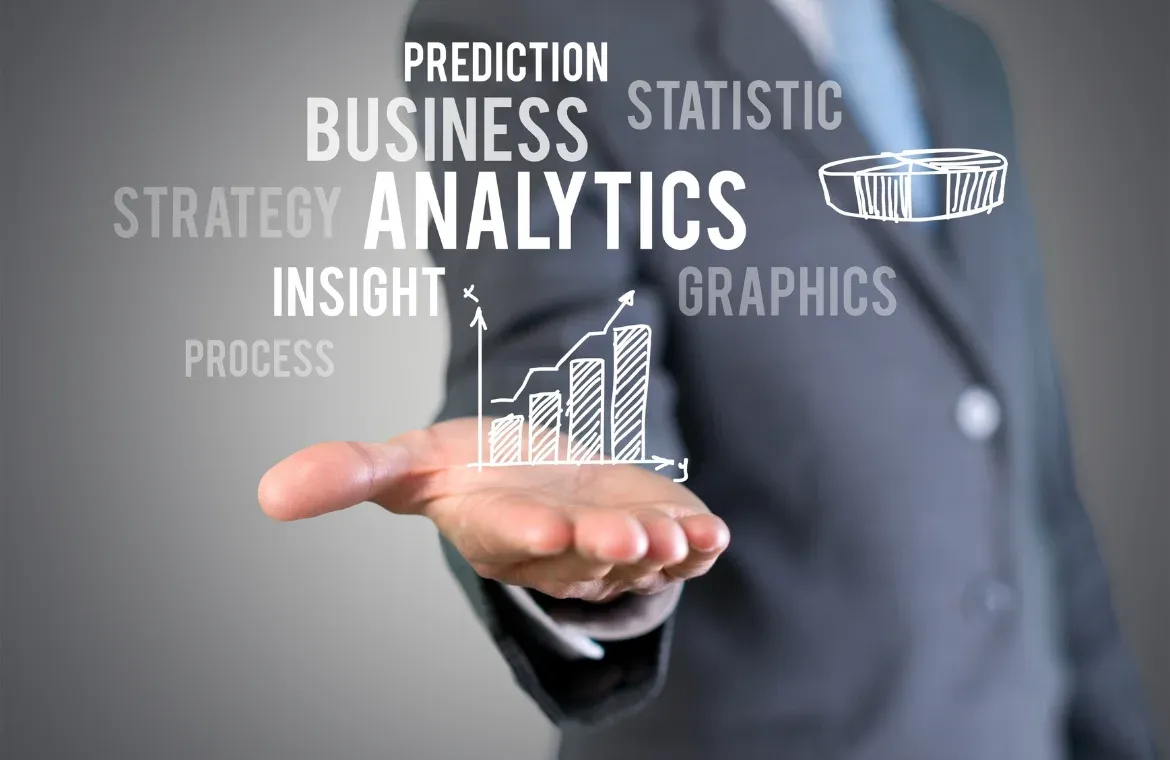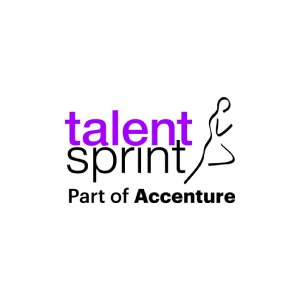What are the types of business analytics?

Ever wondered how Netflix knows exactly what you’ll want to watch next, or how Amazon recommends the one product you didn’t even realize you needed? These aren’t lucky guesses they’re the result of business analytics working behind the scenes.
In today’s data-driven world, every click, purchase, and interaction generates valuable information. Businesses that know how to capture and analyze this data don’t just react to trends they predict them. This is where business analytics comes in. Simply put, it’s the science of turning data into actionable insights using statistics, modeling, and technology to make smarter business decisions.
From optimizing marketing campaigns to forecasting demand and enhancing customer experience, analytics has become the foundation of successful business strategy. However, not all analytics are the same, and understanding their differences is key to using them effectively.
In this article, we explore the four main types of business analytics breaking down what each type does, how they work together, and how you can apply them to drive real results in your organization.
Types of Business Analytics
Business analytics generally falls into four key categories, each serving a unique purpose in helping organizations interpret and leverage their data for smarter decision-making. As outlined by Stephens, these categories are descriptive, diagnostic, predictive, and prescriptive analytics together forming the foundation of modern data-driven strategy.
1. Descriptive Analytics
Descriptive analytics is the foundation of all data-driven decision-making. It focuses on understanding what has already happened in your organization by analyzing historical data and turning it into meaningful insights. In simple terms, it helps you look back at past performance to uncover trends, spot patterns, and summarize business results.
Benefits of Descriptive Analytics
When done well, descriptive analytics can significantly improve how organizations operate, communicate, and grow. Here’s how it drives value:
- Clear Business Visibility: You can’t manage what you can’t measure. Descriptive analytics provides a real-time view of how your business is performing from sales and marketing to HR and operations. For instance, tracking weekly sales trends can quickly highlight dips before they become problems.
- Smarter Decision-Making: By grounding decisions in data instead of assumptions, managers can react faster and more confidently. Descriptive reports help you move from being reactive to proactive.
- Early Detection of Issues: Continuous monitoring makes it easier to identify warning signs like a sudden drop in customer engagement or rising support tickets before they affect revenue.
- Better Communication and Alignment: Dashboards and visual summaries make insights accessible across departments, ensuring everyone works toward the same goals.
- Foundation for Deeper Analysis: Before you can predict trends or prescribe actions, you need a clear understanding of past performance. Descriptive analytics provides that foundation.
How Descriptive Analytics Works: A Step-by-Step Process
To turn raw data into useful insights, organizations typically follow a structured process:
Step 1: Define Your Key Questions - Start by asking focused, business-oriented questions e.g., “How did our sales perform last quarter?” or “Which marketing channels brought in the most leads this month?”
Step 2: Collect Relevant Data - Pull data from multiple sources CRM, finance systems, marketing dashboards, HR software to create a unified, accurate dataset.
Step 3: Clean and Prepare the Data - Standardize formats, remove duplicates, and fix errors to ensure accuracy. Clean data leads to trustworthy insights.
Step 4: Aggregate and Analyze - Group and summarize your data using techniques like totals, averages, and trends to highlight performance over time or across categories.
Step 5: Visualize and Share Results - Create dashboards and charts that make insights easy to interpret. Tools like Power BI, Tableau, or Google Looker help decision-makers see trends at a glance.
Step 6: Monitor and Iterate - Descriptive analytics isn’t a one-time task. Set up automated reports, refresh dashboards regularly, and review insights in team meetings to track progress and catch new trends early.
2. Diagnostic Analytics
Diagnostic analytics goes a step beyond reporting numbers it analyzes past data to uncover the factors and relationships behind specific outcomes.
By identifying patterns, correlations, and root causes, diagnostic analytics provides the context organizations need to understand why changes occurred and how to respond effectively.
Benefits of diagnostic analytics
Many businesses still rely on gut feeling or assumptions when making critical decisions a risky approach that Gartner reports lead to 83% of business strategies failing due to faulty assumptions.
Diagnostic analytics helps organizations avoid these costly mistakes by turning data into actionable insights. Key benefits include:
- Clearer Visibility: Diagnostic analytics uncovers the root causes of bottlenecks and inefficiencies. This helps leaders optimize workflows and allocate resources effectively.
- Smarter Decisions: By revealing trends and anomalies, it ensures decisions are based on facts, not assumptions. This boosts confidence and accuracy in strategic choices.
- Process Improvements: Identifying cause-and-effect relationships pinpoints areas needing attention. Targeted changes improve efficiency and overall performance.
- Better Customer Experiences: It highlights key moments in the customer journey that drive satisfaction or churn. Insights help tailor experiences and retain more customers.
- Risk Reduction: Analyzing past data helps anticipate potential risks before they occur. For example, banks refine lending practices to reduce defaults.
How Diagnostic Analytics Works: Step-by-Step?
Diagnostic analytics isn’t just about running numbers it’s a structured process that combines business understanding, data expertise, and the right tools to uncover why things happen. Here’s a closer look at the typical workflow:
Step 1: Define the Problem - Start with a clear, specific question. A vague “Why are sales down?” won’t get actionable answers. Instead, narrow it to something like: “Why did sales drop 10% in the Northeast region in April compared to March?” A well-defined problem sets the direction for meaningful analysis.
Step 2: Collect Relevant Data - Gather data from multiple sources CRM systems, web analytics, financial records, surveys, or even unstructured sources like emails and social media. The key is to collect data that directly relates to the problem while filtering out irrelevant noise.
Step 3: Process the Data - Raw data is rarely clean. It may have missing values, duplicates, or inconsistencies that can distort results. Data cleaning involves standardizing formats, filling gaps, and removing errors. Reliable insights depend on accurate, well-prepared data.
Step 4: Choose the Right Analytic Technique - Select the method that best answers your question. Options include regression analysis, hypothesis testing, or anomaly detection. For example, if you want to see whether a new policy caused customer churn to rise, hypothesis testing might be the best approach.
Step 5: Apply Statistical Methods - Crunch the numbers using tools like Python, R, or analytics platforms. Analysts quantify relationships, test assumptions, and build models to reveal the factors driving the outcomes.
Step 6: Visualize the Data - Data visualizations turn complex numbers into clear, actionable insights. Dashboards, charts, and heat maps help spot patterns and highlight root causes for instance, showing regions with the highest customer complaints or departments causing workflow delays.
Step 7: Interpret the Results - The final step is turning analysis into action. Analysts collaborate with business leaders to explain findings in plain language and recommend next steps. This could involve revising marketing campaigns, improving operational processes, or enhancing customer support strategies.
3. Predictive Analytics
Predictive analytics leverages data, AI, machine learning, and statistical modeling to forecast future outcomes. By answering the question, “What is likely to happen next?”, it enables businesses to take proactive steps and maintain a competitive edge.
Benefits of Predictive Analytics
Think of predictive analytics as a way to see what’s coming next. By identifying future opportunities and potential risks, businesses can streamline operations, increase revenue, and stay ahead of the competition.
Benefits of using Predictive Analytics
Here’s how industry leaders are using predictive analytics to drive results:
- Optimizing Resource Allocation: Predictive forecasts help plan inventory, manage workforce, and streamline operations. This reduces costs, prevents stockouts, and minimizes business risks.
- Creating Smarter Go-to-Market Strategies: Teams can anticipate customer behavior and spot emerging trends. This enables targeted campaigns and personalized messaging that drive engagement.
- Personalizing Customer Experiences: By analyzing behavior and preferences, predictive models enable tailored offers and timely outreach. This keeps customers engaged and encourages repeat business.
How Predictive Analytics Works: Step-by-Step?
Predictive analytics transforms data into foresight, helping businesses anticipate outcomes and make smarter decisions. Here’s a simplified look at how the process works:
Step 1: Define the Problem - Start with a clear, specific question. Are you aiming to reduce customer churn, forecast demand, or optimize inventory? A well-defined goal sets the direction for the entire analysis.
Step 2: Collect and Organize Data - Gather data from all relevant sources CRM systems, transaction records, customer support logs, product usage data, and more. Organize it into a unified view, ideally in a centralized data warehouse.
Step 3: Clean and Prepare the Data - Raw data often contains errors, duplicates, missing values, or outliers. Cleaning and preparing the data ensures your model will produce accurate and reliable predictions.
Step 4: Choose the Right Model - Select a model that fits your data and business goal. Options include regression, classification, clustering, or time-series models, depending on whether you’re predicting numbers, categories, patterns, or trends over time.
Step 5: Build and Deploy the Model - Train your model using AI, machine learning, or statistical methods. Once validated, integrate it into your workflow, dashboards, or products to start generating predictions.
Step 6: Validate and Test - Test your model with new, unseen data to ensure accuracy. Evaluate performance using metrics like precision, accuracy, or log loss to make sure predictions are reliable.
Step 7: Tune and Optimize - Predictive models aren’t one-and-done. Continuously fine-tune parameters and update the model as new data comes in, so your predictions stay relevant and actionable.
4. Prescriptive Analytics
Prescriptive analytics is an advanced data analytics approach that recommends actions based on real-time data, business goals, and predicted outcomes. While descriptive shows what happened and predictive forecasts what might happen, prescriptive answers “What should we do next?” by suggesting actionable strategies and their potential results.
Benefits of Prescriptive Analytics
In today’s fast-paced business world, relying on instinct alone can be risky. Prescriptive analytics goes beyond predicting outcomes, it guides your next move with actionable, data-driven recommendations. Here’s how it helps businesses cut through the noise and make smarter, faster decisions:
- Real-time, actionable insights: Get instant recommendations based on live data, from optimizing campaigns to adjusting operations on the fly.
- Simplifies complex data: Turn massive, scattered datasets into clear, actionable insights that are easy to understand.
- Provides the full picture: Explore multiple scenarios and outcomes before making a decision, so you can choose the best path.
- Speeds up decision-making: Automates heavy analysis and highlights top options, helping teams act quickly under pressure.
- Reduces bias and guesswork: Brings objectivity to decisions by grounding choices in reliable, explainable data.
- Aligns decisions with business goals: Recommendations are tailored to your KPIs, constraints, and strategic priorities.
How Prescriptive Analytics Works: A Step-by-Step Guide?
Prescriptive analytics goes beyond reporting and predictions it uses AI and machine learning to analyze data and recommend the best actions to achieve your business goals. While implementing it can be complex, understanding the workflow helps simplify the process. Here’s how it works:
Step 1: Define the problem: Identify the challenge, decision variables, and constraints to generate actionable recommendations.
Step 2: Gather the right data: Ensure your data is accurate, complete, and relevant, removing gaps and clearly labeling datasets.
Step 3: Develop the model: Build a model tailored to your objective, using the right machine learning algorithms and structured logic.
Step 4: Test and train: Run the model, fine-tune parameters, and fix inconsistencies to optimize performance.
Step 5: Deploy the model: Integrate the model into business workflows so recommendations become part of daily decision-making.
Step 6: Map outputs to outcomes: Link insights to strategic priorities to ensure recommendations drive meaningful results.
Step 7: Adjust and monitor: Continuously track results, gather feedback, and refine the model to maintain accuracy and effectiveness.
Conclusion
In today’s data-driven world, understanding the four types of business analytics descriptive, diagnostic, predictive, and prescriptive is essential for making smarter, faster, and more informed decisions. Descriptive analytics helps you understand past performance, diagnostic uncovers the reasons behind outcomes, predictive forecasts future trends, and prescriptive recommends the best actions to achieve your goals. Together, these analytics empower organizations to optimize operations, enhance customer experiences, and reduce risks, giving them a competitive edge.
For professionals looking to leverage these insights, pursuing a business analytics course can be transformative. Such courses equip you with the skills to collect, process, and analyze data effectively, use advanced tools like AI and machine learning, and translate complex insights into actionable strategies. Whether you aim to improve decision-making, streamline operations, or drive growth, mastering business analytics opens doors to higher efficiency, smarter strategies, and better career opportunities in today’s data-driven economy.

TalentSprint
TalentSprint is a leading deep-tech education company. It partners with esteemed academic institutions and global corporations to offer advanced learning programs in deep-tech, management, and emerging technologies. Known for its high-impact programs co-created with think tanks and experts, TalentSprint blends academic expertise with practical industry experience.



